Answered step by step
Verified Expert Solution
Question
1 Approved Answer
With the cooperation of the cost accounting manager for the mill and each plant's controller, she gathered the following data for last year: Sawmill:
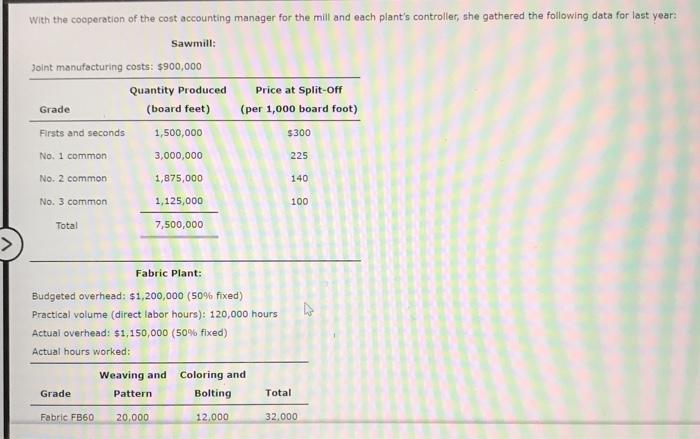
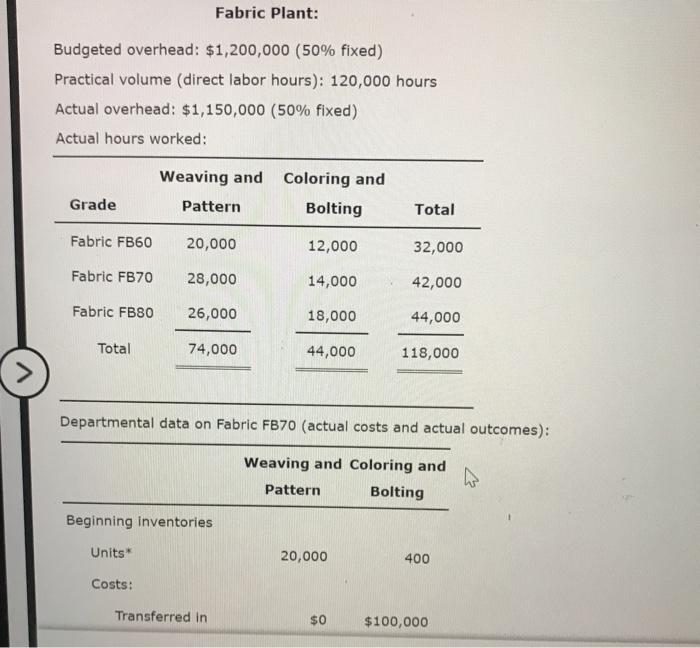
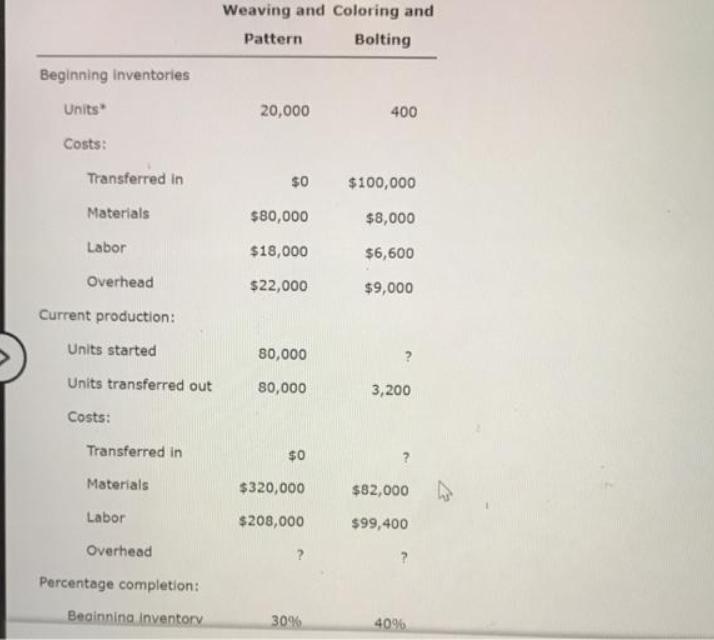
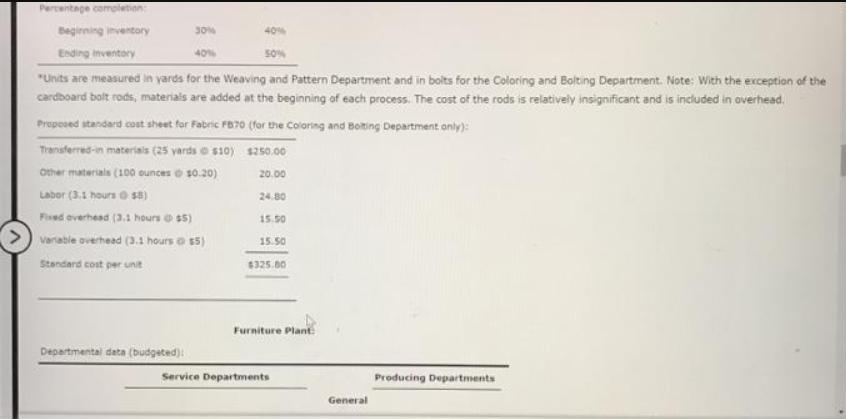
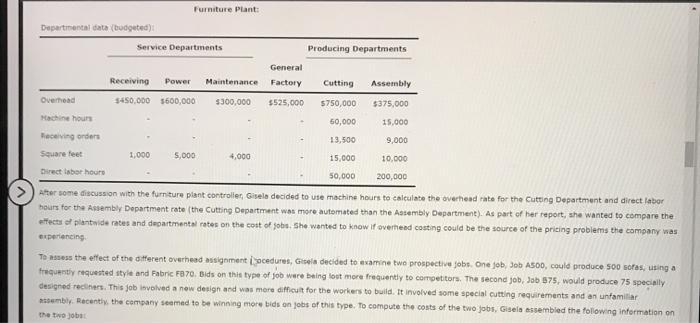
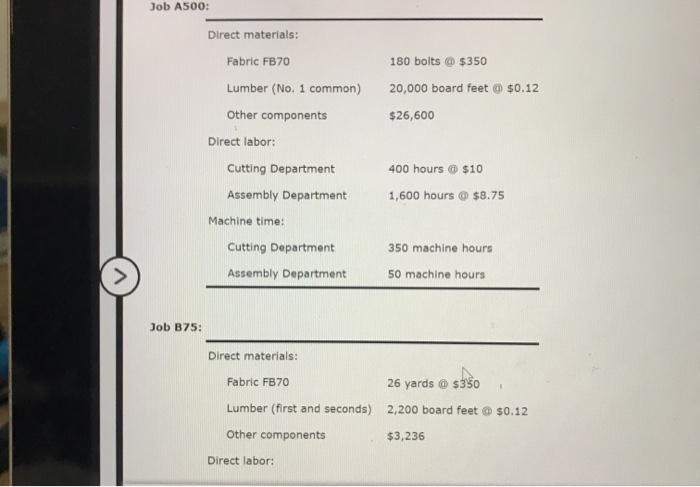
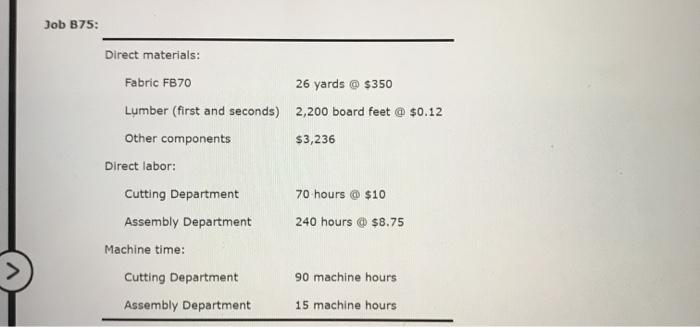
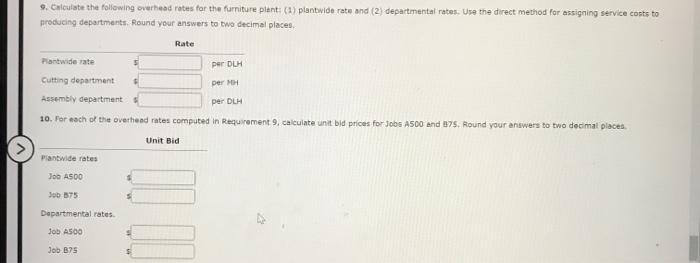

With the cooperation of the cost accounting manager for the mill and each plant's controller, she gathered the following data for last year: Sawmill: Joint manufacturing costs: $900,000 Grade Firsts and seconds. No. 1 common No. 2 common No. 3 common. Total Quantity Produced (board feet) Grade Fabric FB60 1,500,000 3,000,000 1,875,000 1,125,000 7,500,000 Fabric Plant: Budgeted overhead: $1,200,000 (50% fixed) Practical volume (direct labor hours): 120,000 hours Actual overhead: $1,150,000 (50% fixed) Actual hours worked: Price at Split-Off (per 1,000 board foot) 20,000 Weaving and Coloring and Pattern Bolting 12,000 $300 225 140 100 Total 32,000 > Fabric Plant: Budgeted overhead: $1,200,000 (50% fixed) Practical volume (direct labor hours): 120,000 hours Actual overhead: $1,150,000 (50% fixed) Actual hours worked: Grade Fabric FB60 Fabric FB70 Fabric FB80 Total Weaving and Coloring and Pattern Bolting Units* 20,000 Costs: 28,000 26,000 74,000 Beginning inventories 12,000 Transferred in 14,000 18,000 Departmental data on Fabric FB70 (actual costs and actual outcomes): Weaving and Coloring and Pattern Bolting 44,000 20,000 Total $0 32,000 42,000 44,000 118,000 400 $100,000 Beginning inventories Units" Costs: Transferred in Materials Labor Overhead Current production: Units started Units transferred out Costs: Transferred in Materials Labor Overhead Percentage completion: Beginning inventory Weaving and Coloring and Pattern Bolting 20,000 $0 $80,000 $18,000 $22,000 80,000 80,000 $0 $320,000 $208,000 30% 400 $100,000 $8,000 $6,600 $9,000 3,200 $82,000 $99,400 ? 40% Percentage completion: Beginning inventory Ending Inventory 40% 50% "Units are measured in yards for the Weaving and Pattern Department and in bolts for the Coloring and Bolting Department. Note: With the exception of the cardboard bolt rods, materials are added at the beginning of each process. The cost of the rods is relatively insignificant and is included in overhead. 30% Departmental data (budgeted) 40% Proposed standard cost sheet for Fabric FB20 (for the Coloring and Bolting Department only): Transferred-in materials (25 yards $10) $250.00 Other materials (100 ounces $0.20) 20.00 Labor (3.1 hours $8) Fixed overhead (3.1 hours @ $5) Variable overhead (3.1 hours $5) Standard cost per unit 24.80 15.50 15.50 $325.00 Furniture Plant Service Departments General Producing Departments Departmental data (budgeted): Overhead Machine hours Receiving orders Square feet Direct labor hours Furniture Plant: Service Departments General Receiving Power Maintenance Factory $450,000 $600,000 Cutting Assembly $300,000 $525,000 $750,000 $375,000 50,000 15,000 13,500 9,000 15,000 10,000 50,000 200,000 After some discussion with the furniture plant controller, Gisela decided to use machine hours to calculate the overhead rate for the Cutting Department and direct labor hours for the Assembly Department rate (the Cutting Department was more automated than the Assembly Department). As part of her report, she wanted to compare the effects of plantwide rates and departmental rates on the cost of jobs. She wanted to know if overhead casting could be the source of the pricing problems the company was experiencing. 1,000 5,000 Producing Departments 4,000 To assess the effect of the different overhead assignment ocedures, Gisela decided to examine two prospective jobs. One job, Job A500, could produce 500 sofas, using a frequently requested style and Fabric F870. Bids on this type of job were being lost more frequently to competitors. The second job, Job 575, would produce 75 specially designed recliners. This job involved a new design and was more difficult for the workers to build. It involved some special cutting requirements and an unfamiliar assembly. Recently, the company seemed to be winning more bids on jobs of this type. To compute the costs of the two jobs, Gisela assembled the following information on the two jobs Job A500: Job 875: Direct materials: Fabric FB70 Lumber (No. 1 common) Other components Direct labor: Cutting Department Assembly Department Machine time: Cutting Department Assembly Department Direct materials: Fabric FB70 Lumber (first and seconds) Other components Direct labor: 180 bolts @ $350 20,000 board feet @ $0.12 $26,600 400 hours @ $10 1,600 hours $8.75 350 machine hours 50 machine hours 26 yards @ $350 2,200 board feet @ $0.12 $3,236 Job B75: Direct materials: Fabric FB70 Lumber (first and seconds) Other components Direct labor: Cutting Department Assembly Department Machine time: Cutting Department Assembly Department 26 yards @ $350 2,200 board feet @ $0.12 $3,236 70 hours @ $10 240 hours @ $8.75 90 machine hours. 15 machine hours. 9. Calculate the following overhead rates for the furniture plant: (1) plantwide rate and (2) departmental rates. Use the direct method for assigning service costs to producing departments. Round your answers to two decimal places. Plantwide rate per DLH Cutting department per MH Assembly department per DLH 10. For each of the overhead rates computed in Requirement 9, calculate unit bid prices for Jobs A500 and 875. Round your answers to two decimal places. Plantwide rates Job A500 Job 875 Rate Departmental rates. Job A500 Job 875 Unit Bid Assume that the company's aggressive bidding policy is unit cost plus 50 percent. Did departmental overhead rates have any effect on Beauville's winning or losing bids? What recommendation would you make? Explain, Round your answers to two decimal places. Departmental rates decrease the bid for the more easily produced Job A500 and increase the bid for the more difficult to produce Job B75. This appears to be in the right direction. We would recommend using the departmental rates Now, adjust the costs and bids for departmental rate bids using the proposed standard costs for the Coloring and Bolting Department. Did this make a difference? What does this tell you? Round your answers to two decimal places. Enter all amounts as positive numbers. Standard cost would decrease the cost of Fabric FB70 for both jobs. For Job A500, prime costs will decrease by s will decrease by s And for Job 875, prime costs : Thus, the bid for Job A500 will decrease by Similarly, the bid for Job B75 will decrease by $ apparently avaid including waste in our bid by using standard costs and improve our bidding. It also tells us that we This tells us that we can need to focus on becoming more efficient. With the cooperation of the cost accounting manager for the mill and each plant's controller, she gathered the following data for last year: Sawmill: Joint manufacturing costs: $900,000 Grade Firsts and seconds. No. 1 common No. 2 common No. 3 common. Total Quantity Produced (board feet) Grade Fabric FB60 1,500,000 3,000,000 1,875,000 1,125,000 7,500,000 Fabric Plant: Budgeted overhead: $1,200,000 (50% fixed) Practical volume (direct labor hours): 120,000 hours Actual overhead: $1,150,000 (50% fixed) Actual hours worked: Price at Split-Off (per 1,000 board foot) 20,000 Weaving and Coloring and Pattern Bolting 12,000 $300 225 140 100 Total 32,000 > Fabric Plant: Budgeted overhead: $1,200,000 (50% fixed) Practical volume (direct labor hours): 120,000 hours Actual overhead: $1,150,000 (50% fixed) Actual hours worked: Grade Fabric FB60 Fabric FB70 Fabric FB80 Total Weaving and Coloring and Pattern Bolting Units* 20,000 Costs: 28,000 26,000 74,000 Beginning inventories 12,000 Transferred in 14,000 18,000 Departmental data on Fabric FB70 (actual costs and actual outcomes): Weaving and Coloring and Pattern Bolting 44,000 20,000 Total $0 32,000 42,000 44,000 118,000 400 $100,000 Beginning inventories Units" Costs: Transferred in Materials Labor Overhead Current production: Units started Units transferred out Costs: Transferred in Materials Labor Overhead Percentage completion: Beginning inventory Weaving and Coloring and Pattern Bolting 20,000 $0 $80,000 $18,000 $22,000 80,000 80,000 $0 $320,000 $208,000 30% 400 $100,000 $8,000 $6,600 $9,000 3,200 $82,000 $99,400 ? 40% Percentage completion: Beginning inventory Ending Inventory 40% 50% "Units are measured in yards for the Weaving and Pattern Department and in bolts for the Coloring and Bolting Department. Note: With the exception of the cardboard bolt rods, materials are added at the beginning of each process. The cost of the rods is relatively insignificant and is included in overhead. 30% Departmental data (budgeted) 40% Proposed standard cost sheet for Fabric FB20 (for the Coloring and Bolting Department only): Transferred-in materials (25 yards $10) $250.00 Other materials (100 ounces $0.20) 20.00 Labor (3.1 hours $8) Fixed overhead (3.1 hours @ $5) Variable overhead (3.1 hours $5) Standard cost per unit 24.80 15.50 15.50 $325.00 Furniture Plant Service Departments General Producing Departments Departmental data (budgeted): Overhead Machine hours Receiving orders Square feet Direct labor hours Furniture Plant: Service Departments General Receiving Power Maintenance Factory $450,000 $600,000 Cutting Assembly $300,000 $525,000 $750,000 $375,000 50,000 15,000 13,500 9,000 15,000 10,000 50,000 200,000 After some discussion with the furniture plant controller, Gisela decided to use machine hours to calculate the overhead rate for the Cutting Department and direct labor hours for the Assembly Department rate (the Cutting Department was more automated than the Assembly Department). As part of her report, she wanted to compare the effects of plantwide rates and departmental rates on the cost of jobs. She wanted to know if overhead casting could be the source of the pricing problems the company was experiencing. 1,000 5,000 Producing Departments 4,000 To assess the effect of the different overhead assignment ocedures, Gisela decided to examine two prospective jobs. One job, Job A500, could produce 500 sofas, using a frequently requested style and Fabric F870. Bids on this type of job were being lost more frequently to competitors. The second job, Job 575, would produce 75 specially designed recliners. This job involved a new design and was more difficult for the workers to build. It involved some special cutting requirements and an unfamiliar assembly. Recently, the company seemed to be winning more bids on jobs of this type. To compute the costs of the two jobs, Gisela assembled the following information on the two jobs Job A500: Job 875: Direct materials: Fabric FB70 Lumber (No. 1 common) Other components Direct labor: Cutting Department Assembly Department Machine time: Cutting Department Assembly Department Direct materials: Fabric FB70 Lumber (first and seconds) Other components Direct labor: 180 bolts @ $350 20,000 board feet @ $0.12 $26,600 400 hours @ $10 1,600 hours $8.75 350 machine hours 50 machine hours 26 yards @ $350 2,200 board feet @ $0.12 $3,236 Job B75: Direct materials: Fabric FB70 Lumber (first and seconds) Other components Direct labor: Cutting Department Assembly Department Machine time: Cutting Department Assembly Department 26 yards @ $350 2,200 board feet @ $0.12 $3,236 70 hours @ $10 240 hours @ $8.75 90 machine hours. 15 machine hours. 9. Calculate the following overhead rates for the furniture plant: (1) plantwide rate and (2) departmental rates. Use the direct method for assigning service costs to producing departments. Round your answers to two decimal places. Plantwide rate per DLH Cutting department per MH Assembly department per DLH 10. For each of the overhead rates computed in Requirement 9, calculate unit bid prices for Jobs A500 and 875. Round your answers to two decimal places. Plantwide rates Job A500 Job 875 Rate Departmental rates. Job A500 Job 875 Unit Bid Assume that the company's aggressive bidding policy is unit cost plus 50 percent. Did departmental overhead rates have any effect on Beauville's winning or losing bids? What recommendation would you make? Explain, Round your answers to two decimal places. Departmental rates decrease the bid for the more easily produced Job A500 and increase the bid for the more difficult to produce Job B75. This appears to be in the right direction. We would recommend using the departmental rates Now, adjust the costs and bids for departmental rate bids using the proposed standard costs for the Coloring and Bolting Department. Did this make a difference? What does this tell you? Round your answers to two decimal places. Enter all amounts as positive numbers. Standard cost would decrease the cost of Fabric FB70 for both jobs. For Job A500, prime costs will decrease by s will decrease by s And for Job 875, prime costs : Thus, the bid for Job A500 will decrease by Similarly, the bid for Job B75 will decrease by $ apparently avaid including waste in our bid by using standard costs and improve our bidding. It also tells us that we This tells us that we can need to focus on becoming more efficient. With the cooperation of the cost accounting manager for the mill and each plant's controller, she gathered the following data for last year: Sawmill: Joint manufacturing costs: $900,000 Grade Firsts and seconds. No. 1 common No. 2 common No. 3 common. Total Quantity Produced (board feet) Grade Fabric FB60 1,500,000 3,000,000 1,875,000 1,125,000 7,500,000 Fabric Plant: Budgeted overhead: $1,200,000 (50% fixed) Practical volume (direct labor hours): 120,000 hours Actual overhead: $1,150,000 (50% fixed) Actual hours worked: Price at Split-Off (per 1,000 board foot) 20,000 Weaving and Coloring and Pattern Bolting 12,000 $300 225 140 100 Total 32,000 > Fabric Plant: Budgeted overhead: $1,200,000 (50% fixed) Practical volume (direct labor hours): 120,000 hours Actual overhead: $1,150,000 (50% fixed) Actual hours worked: Grade Fabric FB60 Fabric FB70 Fabric FB80 Total Weaving and Coloring and Pattern Bolting Units* 20,000 Costs: 28,000 26,000 74,000 Beginning inventories 12,000 Transferred in 14,000 18,000 Departmental data on Fabric FB70 (actual costs and actual outcomes): Weaving and Coloring and Pattern Bolting 44,000 20,000 Total $0 32,000 42,000 44,000 118,000 400 $100,000 Beginning inventories Units" Costs: Transferred in Materials Labor Overhead Current production: Units started Units transferred out Costs: Transferred in Materials Labor Overhead Percentage completion: Beginning inventory Weaving and Coloring and Pattern Bolting 20,000 $0 $80,000 $18,000 $22,000 80,000 80,000 $0 $320,000 $208,000 30% 400 $100,000 $8,000 $6,600 $9,000 3,200 $82,000 $99,400 ? 40% Percentage completion: Beginning inventory Ending Inventory 40% 50% "Units are measured in yards for the Weaving and Pattern Department and in bolts for the Coloring and Bolting Department. Note: With the exception of the cardboard bolt rods, materials are added at the beginning of each process. The cost of the rods is relatively insignificant and is included in overhead. 30% Departmental data (budgeted) 40% Proposed standard cost sheet for Fabric FB20 (for the Coloring and Bolting Department only): Transferred-in materials (25 yards $10) $250.00 Other materials (100 ounces $0.20) 20.00 Labor (3.1 hours $8) Fixed overhead (3.1 hours @ $5) Variable overhead (3.1 hours $5) Standard cost per unit 24.80 15.50 15.50 $325.00 Furniture Plant Service Departments General Producing Departments Departmental data (budgeted): Overhead Machine hours Receiving orders Square feet Direct labor hours Furniture Plant: Service Departments General Receiving Power Maintenance Factory $450,000 $600,000 Cutting Assembly $300,000 $525,000 $750,000 $375,000 50,000 15,000 13,500 9,000 15,000 10,000 50,000 200,000 After some discussion with the furniture plant controller, Gisela decided to use machine hours to calculate the overhead rate for the Cutting Department and direct labor hours for the Assembly Department rate (the Cutting Department was more automated than the Assembly Department). As part of her report, she wanted to compare the effects of plantwide rates and departmental rates on the cost of jobs. She wanted to know if overhead casting could be the source of the pricing problems the company was experiencing. 1,000 5,000 Producing Departments 4,000 To assess the effect of the different overhead assignment ocedures, Gisela decided to examine two prospective jobs. One job, Job A500, could produce 500 sofas, using a frequently requested style and Fabric F870. Bids on this type of job were being lost more frequently to competitors. The second job, Job 575, would produce 75 specially designed recliners. This job involved a new design and was more difficult for the workers to build. It involved some special cutting requirements and an unfamiliar assembly. Recently, the company seemed to be winning more bids on jobs of this type. To compute the costs of the two jobs, Gisela assembled the following information on the two jobs Job A500: Job 875: Direct materials: Fabric FB70 Lumber (No. 1 common) Other components Direct labor: Cutting Department Assembly Department Machine time: Cutting Department Assembly Department Direct materials: Fabric FB70 Lumber (first and seconds) Other components Direct labor: 180 bolts @ $350 20,000 board feet @ $0.12 $26,600 400 hours @ $10 1,600 hours $8.75 350 machine hours 50 machine hours 26 yards @ $350 2,200 board feet @ $0.12 $3,236 Job B75: Direct materials: Fabric FB70 Lumber (first and seconds) Other components Direct labor: Cutting Department Assembly Department Machine time: Cutting Department Assembly Department 26 yards @ $350 2,200 board feet @ $0.12 $3,236 70 hours @ $10 240 hours @ $8.75 90 machine hours. 15 machine hours. 9. Calculate the following overhead rates for the furniture plant: (1) plantwide rate and (2) departmental rates. Use the direct method for assigning service costs to producing departments. Round your answers to two decimal places. Plantwide rate per DLH Cutting department per MH Assembly department per DLH 10. For each of the overhead rates computed in Requirement 9, calculate unit bid prices for Jobs A500 and 875. Round your answers to two decimal places. Plantwide rates Job A500 Job 875 Rate Departmental rates. Job A500 Job 875 Unit Bid Assume that the company's aggressive bidding policy is unit cost plus 50 percent. Did departmental overhead rates have any effect on Beauville's winning or losing bids? What recommendation would you make? Explain, Round your answers to two decimal places. Departmental rates decrease the bid for the more easily produced Job A500 and increase the bid for the more difficult to produce Job B75. This appears to be in the right direction. We would recommend using the departmental rates Now, adjust the costs and bids for departmental rate bids using the proposed standard costs for the Coloring and Bolting Department. Did this make a difference? What does this tell you? Round your answers to two decimal places. Enter all amounts as positive numbers. Standard cost would decrease the cost of Fabric FB70 for both jobs. For Job A500, prime costs will decrease by s will decrease by s And for Job 875, prime costs : Thus, the bid for Job A500 will decrease by Similarly, the bid for Job B75 will decrease by $ apparently avaid including waste in our bid by using standard costs and improve our bidding. It also tells us that we This tells us that we can need to focus on becoming more efficient. With the cooperation of the cost accounting manager for the mill and each plant's controller, she gathered the following data for last year: Sawmill: Joint manufacturing costs: $900,000 Grade Firsts and seconds. No. 1 common No. 2 common No. 3 common. Total Quantity Produced (board feet) Grade Fabric FB60 1,500,000 3,000,000 1,875,000 1,125,000 7,500,000 Fabric Plant: Budgeted overhead: $1,200,000 (50% fixed) Practical volume (direct labor hours): 120,000 hours Actual overhead: $1,150,000 (50% fixed) Actual hours worked: Price at Split-Off (per 1,000 board foot) 20,000 Weaving and Coloring and Pattern Bolting 12,000 $300 225 140 100 Total 32,000 > Fabric Plant: Budgeted overhead: $1,200,000 (50% fixed) Practical volume (direct labor hours): 120,000 hours Actual overhead: $1,150,000 (50% fixed) Actual hours worked: Grade Fabric FB60 Fabric FB70 Fabric FB80 Total Weaving and Coloring and Pattern Bolting Units* 20,000 Costs: 28,000 26,000 74,000 Beginning inventories 12,000 Transferred in 14,000 18,000 Departmental data on Fabric FB70 (actual costs and actual outcomes): Weaving and Coloring and Pattern Bolting 44,000 20,000 Total $0 32,000 42,000 44,000 118,000 400 $100,000 Beginning inventories Units" Costs: Transferred in Materials Labor Overhead Current production: Units started Units transferred out Costs: Transferred in Materials Labor Overhead Percentage completion: Beginning inventory Weaving and Coloring and Pattern Bolting 20,000 $0 $80,000 $18,000 $22,000 80,000 80,000 $0 $320,000 $208,000 30% 400 $100,000 $8,000 $6,600 $9,000 3,200 $82,000 $99,400 ? 40% Percentage completion: Beginning inventory Ending Inventory 40% 50% "Units are measured in yards for the Weaving and Pattern Department and in bolts for the Coloring and Bolting Department. Note: With the exception of the cardboard bolt rods, materials are added at the beginning of each process. The cost of the rods is relatively insignificant and is included in overhead. 30% Departmental data (budgeted) 40% Proposed standard cost sheet for Fabric FB20 (for the Coloring and Bolting Department only): Transferred-in materials (25 yards $10) $250.00 Other materials (100 ounces $0.20) 20.00 Labor (3.1 hours $8) Fixed overhead (3.1 hours @ $5) Variable overhead (3.1 hours $5) Standard cost per unit 24.80 15.50 15.50 $325.00 Furniture Plant Service Departments General Producing Departments Departmental data (budgeted): Overhead Machine hours Receiving orders Square feet Direct labor hours Furniture Plant: Service Departments General Receiving Power Maintenance Factory $450,000 $600,000 Cutting Assembly $300,000 $525,000 $750,000 $375,000 50,000 15,000 13,500 9,000 15,000 10,000 50,000 200,000 After some discussion with the furniture plant controller, Gisela decided to use machine hours to calculate the overhead rate for the Cutting Department and direct labor hours for the Assembly Department rate (the Cutting Department was more automated than the Assembly Department). As part of her report, she wanted to compare the effects of plantwide rates and departmental rates on the cost of jobs. She wanted to know if overhead casting could be the source of the pricing problems the company was experiencing. 1,000 5,000 Producing Departments 4,000 To assess the effect of the different overhead assignment ocedures, Gisela decided to examine two prospective jobs. One job, Job A500, could produce 500 sofas, using a frequently requested style and Fabric F870. Bids on this type of job were being lost more frequently to competitors. The second job, Job 575, would produce 75 specially designed recliners. This job involved a new design and was more difficult for the workers to build. It involved some special cutting requirements and an unfamiliar assembly. Recently, the company seemed to be winning more bids on jobs of this type. To compute the costs of the two jobs, Gisela assembled the following information on the two jobs Job A500: Job 875: Direct materials: Fabric FB70 Lumber (No. 1 common) Other components Direct labor: Cutting Department Assembly Department Machine time: Cutting Department Assembly Department Direct materials: Fabric FB70 Lumber (first and seconds) Other components Direct labor: 180 bolts @ $350 20,000 board feet @ $0.12 $26,600 400 hours @ $10 1,600 hours $8.75 350 machine hours 50 machine hours 26 yards @ $350 2,200 board feet @ $0.12 $3,236 Job B75: Direct materials: Fabric FB70 Lumber (first and seconds) Other components Direct labor: Cutting Department Assembly Department Machine time: Cutting Department Assembly Department 26 yards @ $350 2,200 board feet @ $0.12 $3,236 70 hours @ $10 240 hours @ $8.75 90 machine hours. 15 machine hours. 9. Calculate the following overhead rates for the furniture plant: (1) plantwide rate and (2) departmental rates. Use the direct method for assigning service costs to producing departments. Round your answers to two decimal places. Plantwide rate per DLH Cutting department per MH Assembly department per DLH 10. For each of the overhead rates computed in Requirement 9, calculate unit bid prices for Jobs A500 and 875. Round your answers to two decimal places. Plantwide rates Job A500 Job 875 Rate Departmental rates. Job A500 Job 875 Unit Bid Assume that the company's aggressive bidding policy is unit cost plus 50 percent. Did departmental overhead rates have any effect on Beauville's winning or losing bids? What recommendation would you make? Explain, Round your answers to two decimal places. Departmental rates decrease the bid for the more easily produced Job A500 and increase the bid for the more difficult to produce Job B75. This appears to be in the right direction. We would recommend using the departmental rates Now, adjust the costs and bids for departmental rate bids using the proposed standard costs for the Coloring and Bolting Department. Did this make a difference? What does this tell you? Round your answers to two decimal places. Enter all amounts as positive numbers. Standard cost would decrease the cost of Fabric FB70 for both jobs. For Job A500, prime costs will decrease by s will decrease by s And for Job 875, prime costs : Thus, the bid for Job A500 will decrease by Similarly, the bid for Job B75 will decrease by $ apparently avaid including waste in our bid by using standard costs and improve our bidding. It also tells us that we This tells us that we can need to focus on becoming more efficient.
Step by Step Solution
★★★★★
3.45 Rating (152 Votes )
There are 3 Steps involved in it
Step: 1
Answer 1 a Physical Unit Method of Allocation Grades Quantity Produced Boards Feet Allocation Unit C...
Get Instant Access to Expert-Tailored Solutions
See step-by-step solutions with expert insights and AI powered tools for academic success
Step: 2

Step: 3

Ace Your Homework with AI
Get the answers you need in no time with our AI-driven, step-by-step assistance
Get Started


